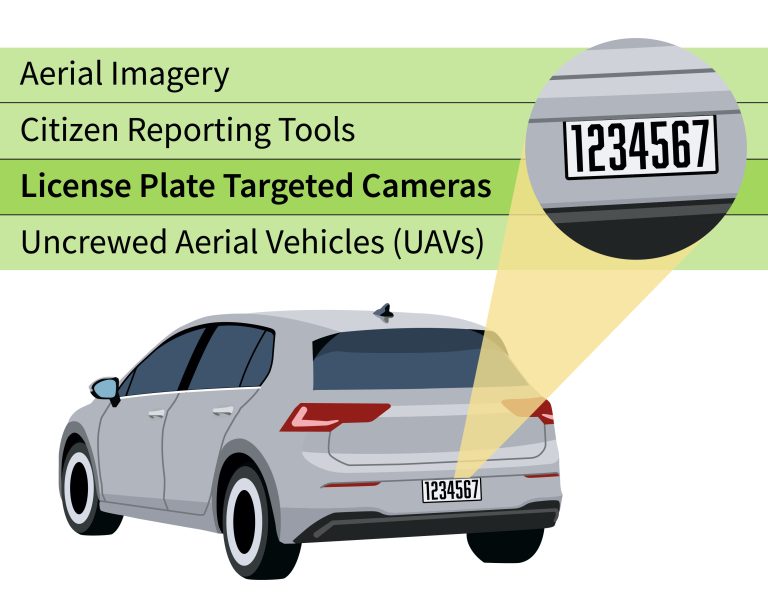Illegal Dumping in San Bernardino County

Overview
Problem

Across the globe, municipalities face a near-constant struggle with a seemingly endless onslaught of illegal dumping impacting their residents. Strategies to counter these afflictions range from efforts such as citizen “tipping” apps to increased enforcement and online community-building. Furthermore, many localities have begun using so-called “camera- enforcement strategies” to better alleviate illegal dumping activity. These digital strategies represent the evolution of mitigation from a place of traditional, spotty enforcement to one of consistency and effectiveness.
To that end, new illegal dumping alleviation efforts have been enhanced significantly with partnerships between the public sector and private corporations. When looking to ramp up mitigation efforts, a given locality has a wide variety of potential partners waiting with open arms. They can turn to the many variations of camera-related enforcement methods (remote- operated, aerial surveillance), community reporting applications, and new physical equipment for staff (e.g., drones). There are many potential alleviation methods, mainly in the realm of object detection using aerial imagery. These technologies are in their infancy but could soon become feasible in the fight against blights.
In the grand struggle against illegal dumping, San Bernardino County has begun to adopt such technologies such as aerial imagery collection, citizen reporting tools, Automated License Plate Reader (ALPR) cameras, and small Unmanned Aerial Systems (sUAS). Each of these technologies adds to a growing toolbox for the county as it continues to endure many illegal dumping cases annually. These strategies employ a camera in one form or another, demonstrating its continued success in elevating enforcement strategies. In all, San Bernardino County has made an effort to adopt cutting-edge digital technologies which allow for greater efficiency and effectiveness of mitigation programs. Due to the vast size of the county, varying topography, the lack of consistent communications and power infrastructure, the need to analyze innovative and flexible solutions was paramount.
Innovation in Action

Conclusion

